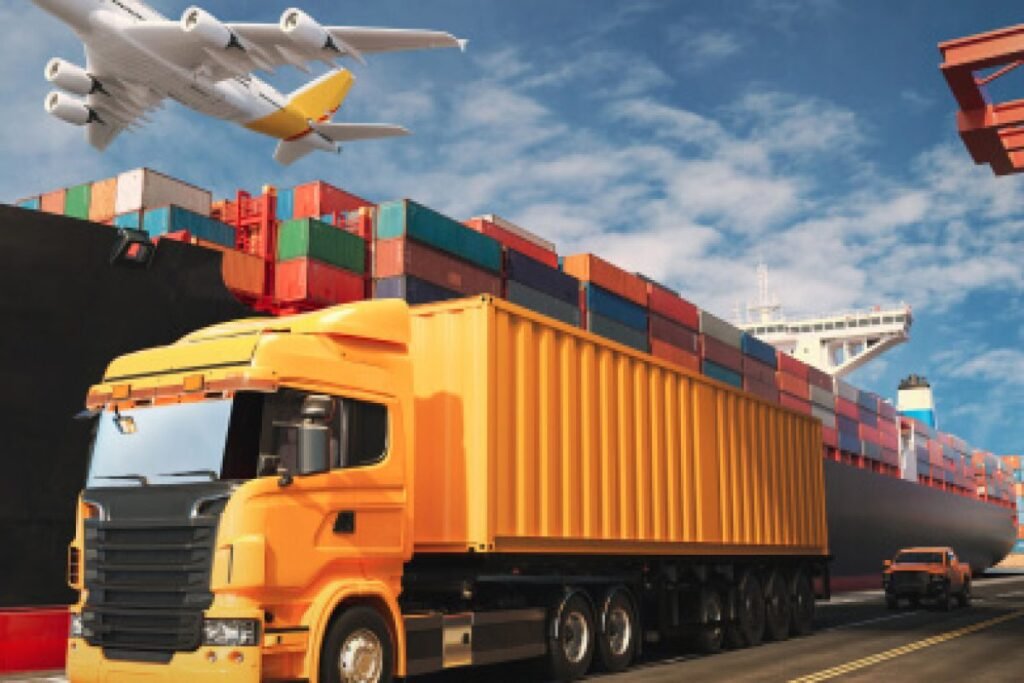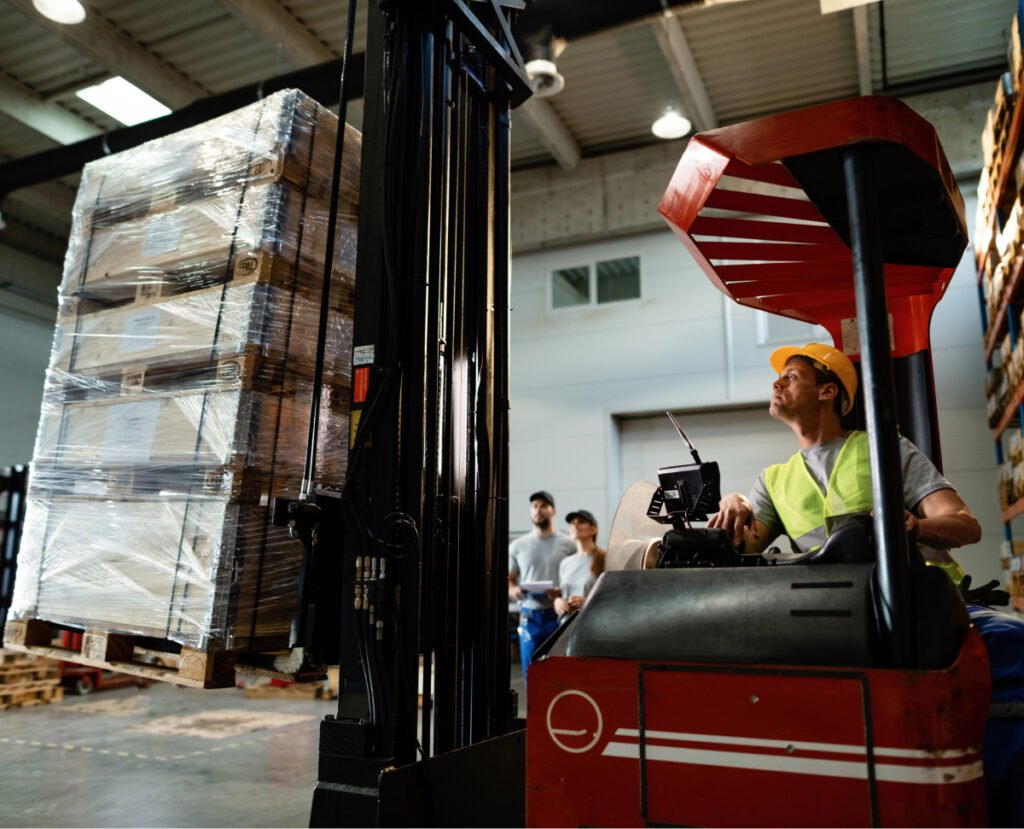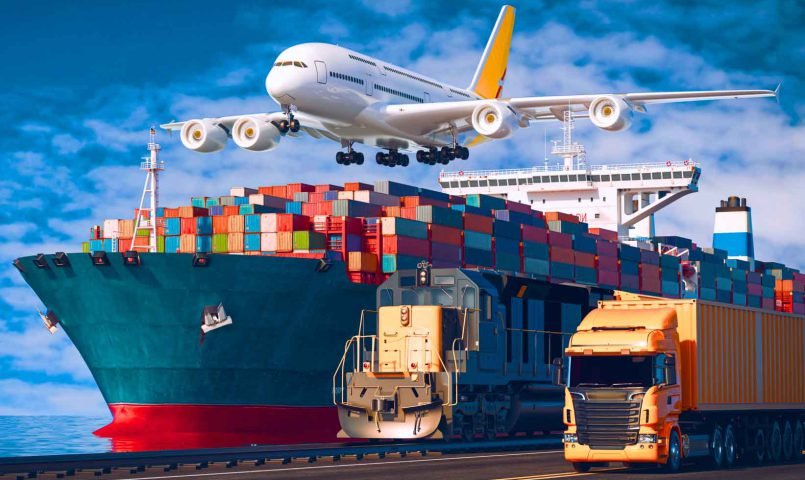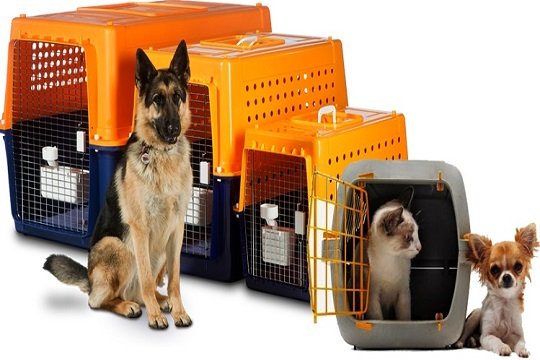Our Services

Air Transportation
Air transportation involves the movement of passengers, cargo, and mail by aircraft. It is a critical component of the global transportation network and plays a vital role in connecting distant locations quickly. Here are key aspects related to air transportation:
- Commercial Airlines:
- Commercial airlines provide scheduled passenger and cargo services. They operate a variety of aircraft, including narrow-body and wide-body planes, to serve domestic and international routes.
- Cargo Airlines:
- Cargo airlines specialize in transporting freight and cargo. They play a crucial role in global trade by facilitating the rapid movement of goods between countries.
- Airports:
- Airports are essential infrastructure for air transportation. They serve as hubs for the departure, arrival, and transfer of passengers and cargo. Major airports often have extensive facilities, including runways, terminals, and cargo handling areas.
- Aircraft Types:
- Various types of aircraft are used in air transportation, ranging from small regional planes to large, long-haul jets. This includes passenger planes, cargo planes, and specialized aircraft for tasks such as firefighting or medical evacuation.
- Passenger Airlines:
- Passenger airlines transport people between cities and countries. They offer a range of services, including economy class, business class, and first class, with amenities such as in-flight entertainment and meals.
- Freight Services:
- Air cargo services are crucial for transporting time-sensitive and high-value goods. Freight airlines use dedicated cargo planes or allocate space in passenger planes for shipping goods.
- Air Traffic Control (ATC):
- Air traffic control systems manage the safe and efficient movement of aircraft within controlled airspace and on the ground at airports. ATC ensures proper separation between planes and guides them during takeoff, landing, and en-route.
- International Aviation Organizations:
- Organizations such as the International Civil Aviation Organization (ICAO) establish global standards and regulations for aviation safety, security, and environmental sustainability.
- Security Measures:
- Due to the high-profile nature of air transportation, security measures are stringent. These include passenger and baggage screening, secure cockpit protocols, and international security standards.
- Hub-and-Spoke System:
- Many airlines operate using a hub-and-spoke system, where a central hub airport acts as a transfer point for connecting flights. This system optimizes route efficiency and connectivity.
- Flight Planning and Navigation:
- Pilots and flight planners use sophisticated navigation systems, charts, and weather data to plan flight routes and ensure safe and efficient journeys.
- Environmental Impact:
- The environmental impact of air transportation, particularly in terms of greenhouse gas emissions, has led to efforts to improve fuel efficiency, develop sustainable aviation fuels, and explore alternative propulsion technologies.
- Emergency and Medical Services:
- Air transportation is vital for emergency medical services, including air ambulances and medical evacuation flights, allowing for the rapid transport of patients to specialized medical facilities.
- Private Aviation:
- Private aviation includes non-commercial flights by individuals or companies using private jets and smaller aircraft for business or personal travel.
- Technological Advancements:
- Ongoing technological advancements, such as the development of more fuel-efficient aircraft, advancements in avionics, and the exploration of electric and hybrid propulsion, are shaping the future of air transportation.
Air transportation offers rapid and efficient connections between distant locations, making it a key element in the global transportation network. While it provides speed and convenience, challenges such as environmental concerns and the need for infrastructure development continue to be addressed by the aviation industry.

Road Transportation
Road transportation refers to the movement of goods, passengers, and cargo using road networks, typically by vehicles such as trucks, cars, buses, and motorcycles. It is a crucial component of the transportation system and plays a significant role in the economy. Here are key aspects related to road transportation:
- Modes of Road Transportation:
- Trucking: Trucks are a common mode of transporting goods over short and long distances. Different types of trucks are used for various purposes, such as flatbed trucks, refrigerated trucks, and tanker trucks.
- Personal Vehicles: Cars, motorcycles, bicycles, and other personal vehicles are used for individual or family transportation.
- Buses: Buses provide public transportation for passengers, ranging from local city buses to long-distance intercity buses.
- Infrastructure:
- Road transportation relies on a network of roads and highways. The quality and capacity of road infrastructure significantly impact the efficiency and safety of transportation.
- Freight and Logistics:
- Road transportation is a key element in the logistics and supply chain industry. It enables the delivery of goods from manufacturing facilities to distribution centers, retailers, and ultimately to consumers.
- Last-Mile Delivery:
- The last mile of delivery, from distribution centers to the final destination (homes or businesses), is often handled by road transportation. This is crucial in e-commerce and retail, where timely delivery is essential.
- Flexibility:
- Road transportation provides flexibility in terms of routes and destinations. Vehicles can access various locations, including remote areas where other modes of transportation may be less practical.
- Regulations and Licensing:
- Drivers and operators of road transportation vehicles must adhere to regulations and licensing requirements. This includes obtaining the necessary permits, complying with traffic rules, and maintaining vehicle safety standards.
- Traffic Management:
- Efficient traffic management is essential to reduce congestion and improve the flow of vehicles. Traffic control systems, road signs, and smart transportation technologies contribute to better road utilization.
- Public Transportation:
- Public transportation services, such as buses and commuter trains, provide cost-effective options for moving large numbers of people within urban areas and between cities.
- Safety Measures:
- Road transportation involves various safety measures, including seatbelt use, speed limits, and regulations regarding vehicle maintenance. Governments and organizations promote safety awareness campaigns to reduce accidents.
- Environmental Impact:
- The environmental impact of road transportation, particularly in terms of emissions and pollution, is a concern. Efforts are made to promote sustainable practices, such as the use of electric vehicles and the development of cleaner fuels.
- Technology Integration:
- Technology plays a significant role in road transportation. This includes GPS navigation systems, telematics for fleet management, and the development of autonomous vehicles, which have the potential to enhance safety and efficiency.
- Maintenance and Infrastructure Development:
- Regular maintenance of roads and infrastructure is essential to ensure the safety and smooth operation of road transportation. Governments invest in the development and improvement of road networks.
Road transportation is a versatile and widely used mode of transportation that serves diverse purposes, from the movement of goods and passengers to supporting economic activities and daily commuting. Advances in technology and a focus on sustainability continue to shape the future of road transportation.

Door to Door Delivery
Door-to-door delivery refers to a shipping service where goods or packages are picked up from a specific location, usually the sender’s address, and delivered directly to the recipient’s door. This type of service is commonly used in the shipping and logistics industry, providing convenience for both businesses and consumers. Here are key points related to door-to-door delivery:
- Pickup Service:
- The process typically begins with a pickup service where a courier or delivery personnel collects the goods from the specified location. This can be a residence, business, or another designated place.
- Transportation:
- Once collected, the goods are transported through various modes, such as trucks, vans, or even specialized vehicles, depending on the nature and size of the items being shipped.
- Tracking and Visibility:
- Many door-to-door delivery services offer tracking features. This allows both the sender and the recipient to monitor the progress of the shipment in real-time, providing visibility into the delivery process.
- Documentation:
- Couriers and delivery services often handle the necessary documentation, including shipping labels, invoices, and customs forms for international shipments. This helps streamline the shipping process for the sender.
- Customs Clearance (for International Shipments):
- In the case of international door-to-door delivery, customs clearance may be required. The delivery service assists in ensuring that the necessary customs documentation is complete and facilitates the smooth movement of goods across borders.
- Last-Mile Delivery:
- The last mile of the delivery process is crucial, involving the transportation of goods from a local distribution center or hub to the recipient’s actual address. This is often the most expensive and logistically challenging part of the delivery process.
- Delivery Confirmation:
- Upon successful delivery, the recipient may be required to sign for the package as proof of receipt. Some services also provide electronic confirmation or delivery notifications.
- Time-Sensitive Deliveries:
- Door-to-door delivery services often offer options for time-sensitive deliveries, including same-day or next-day delivery. This is especially common in urban areas and for e-commerce shipments.
- Shipping Costs:
- The cost of door-to-door delivery depends on various factors, including the weight and dimensions of the package, the distance traveled, the speed of delivery, and any additional services required, such as insurance or special handling.
- E-commerce and Retail:
- Door-to-door delivery is widely used in the e-commerce and retail sectors, where businesses strive to provide a seamless and convenient shopping experience for customers.
- Customer Support:
- Reliable door-to-door delivery services often provide customer support to address inquiries, track shipments, and handle any issues that may arise during the shipping process.
- Environmental Considerations:
- With increasing awareness of environmental sustainability, some delivery services are exploring eco-friendly options, such as electric vehicles or other environmentally conscious practices, to reduce their carbon footprint.
Door-to-door delivery services have become an integral part of modern commerce, offering convenience and reliability for businesses and consumers alike. The efficiency of these services is influenced by factors such as technology, infrastructure, and operational strategies employed by the shipping and logistics companies.

Warehouse Facility
A warehouse facility is a dedicated space used for the storage, handling, and management of goods and materials. Warehouses play a critical role in the supply chain, serving as points of consolidation, distribution, and storage. Here are key aspects related to warehouse facilities:
- Storage and Organization:
- Warehouses are designed to efficiently store goods in an organized manner. This involves the use of shelves, racks, pallets, and other storage systems to maximize space and facilitate easy access to products.
- Types of Warehouses:
- Distribution Centers: Focus on the efficient movement of goods in and out, often serving as a hub for sorting, packing, and shipping.
- Fulfillment Centers: Primarily used in e-commerce, fulfillment centers handle the processing of customer orders, including picking, packing, and shipping.
- Cold Storage Warehouses: Specifically designed for the storage of perishable goods, such as food and pharmaceuticals, at controlled temperatures.
- Bulk Storage Warehouses: Ideal for large quantities of unpackaged goods or bulk materials.
- Cross-Docking Facilities: Goods are received and immediately shipped out with minimal storage time, reducing the need for long-term storage.
- Inventory Management:
- Warehouses utilize inventory management systems to keep track of stock levels, monitor product movements, and streamline order fulfillment. This helps prevent overstocking or stockouts and improves overall efficiency.
- Technology Integration:
- Modern warehouses often incorporate technologies like warehouse management systems (WMS), radio-frequency identification (RFID), and automated storage and retrieval systems (AS/RS) to enhance operational efficiency, accuracy, and speed.
- Security Measures:
- Warehouses implement security measures to protect stored goods from theft, damage, or unauthorized access. This may include surveillance cameras, access control systems, and security personnel.
- Loading and Unloading:
- Warehouses have designated areas for loading and unloading goods. Loading docks are equipped with ramps, lifts, or conveyor systems to facilitate the movement of products between trucks and the warehouse.
- Transportation Connectivity:
- Proximity to transportation infrastructure, such as highways, ports, and railroads, is a crucial consideration when selecting warehouse locations. This ensures efficient transportation of goods to and from the facility.
- Flexibility and Scalability:
- Warehouses need to be adaptable to changing business needs. Flexibility in layout and the ability to scale operations are important features, especially in dynamic industries.
- Regulatory Compliance:
- Warehouses must comply with various regulations, such as safety standards, environmental regulations, and zoning laws. This includes adherence to fire safety codes and occupational health and safety guidelines.
- Cross-Docking:
- Some warehouses incorporate cross-docking, a logistics strategy where incoming goods are directly transferred to outbound transportation, minimizing storage time. This is often used to expedite the distribution process.
- Lean Operations:
- The concept of lean operations, which aims to eliminate waste and improve efficiency, is often applied in warehouse management. This involves continuous improvement processes, such as the use of Lean Six Sigma principles.
- E-commerce Fulfillment:
- With the rise of online shopping, many warehouses are adapting to meet the specific requirements of e-commerce fulfillment, including order picking, packing, and fast shipping.
Effective warehouse management is crucial for businesses to meet customer demands, reduce costs, and maintain a competitive edge in the market. It requires a combination of strategic planning, technological integration, and efficient operational processes.

Ocean Transportation
Ocean transportation, also known as maritime or sea transportation, involves the movement of goods, people, and cargo across oceans and seas using ships and vessels. It is a crucial component of the global economy and plays a significant role in international trade. Here are some key aspects of ocean transportation:
- Types of Vessels:
- Container Ships: These ships carry standardized containers, facilitating efficient loading and unloading at ports. Containerization has revolutionized global trade by streamlining the handling of goods.
- Bulk Carriers: Designed to transport bulk cargo, such as coal, grain, or minerals. They come in various sizes, including Capesize, Panamax, and Handysize, depending on their capacity.
- Tankers: Designed to transport liquid cargo, such as oil or chemicals. Different types include oil tankers, chemical tankers, and liquefied natural gas (LNG) carriers.
- Ro-Ro (Roll-on/Roll-off) Ships: These vessels are designed to carry wheeled cargo, such as cars, trucks, and trailers, which can be driven on and off the ship.
- Shipping Routes:
- Major shipping routes, often called sea lanes, connect major ports worldwide. These routes are critical for efficient and cost-effective transportation of goods.
- Ports and Terminals:
- Ports serve as crucial hubs for loading and unloading cargo, as well as for various logistics operations. Terminals are specialized facilities within ports designed for specific types of cargo, such as container terminals or bulk terminals.
- Shipping Containers:
- Standardized shipping containers (20-foot and 40-foot containers being the most common) have become the backbone of global trade. They simplify the loading, unloading, and transportation of goods and enable seamless transfer between different modes of transportation.
- Freight Rates and Chartering:
- The cost of ocean transportation is influenced by freight rates, which can vary based on factors like the type of cargo, distance, demand, and the type of shipping contract (chartering).
- International Regulations:
- The International Maritime Organization (IMO) sets global standards for the safety, security, and environmental performance of international shipping. Regulations cover areas such as vessel design, crew training, and pollution prevention.
- Navigation and Technology:
- Advanced navigation systems, satellite communication, and technologies like Automatic Identification System (AIS) enhance the safety and efficiency of ocean transportation. Electronic navigation charts and weather forecasting also contribute to safe maritime operations.
- Environmental Impact:
- The shipping industry is increasingly focused on adopting eco-friendly practices to reduce its environmental impact. This includes using cleaner fuels, implementing energy-efficient technologies, and exploring alternative propulsion systems.
- Security Concerns:
- Given the international nature of ocean transportation, security concerns, such as piracy and terrorism, are addressed through international cooperation, maritime security initiatives, and the implementation of security measures at ports and on vessels.
- Logistics and Intermodal Connectivity:
- Ocean transportation is part of a broader supply chain that includes various modes of transportation (land, air, and rail). Efficient logistics planning and intermodal connectivity are essential for a seamless and cost-effective flow of goods.
Understanding the complexities of ocean transportation involves considering a range of factors, from vessel types to regulatory compliance, and it plays a crucial role in shaping the dynamics of international trade.

Pet Transport
Pet transport involves the transportation of pets from one location to another, typically for reasons such as relocation, vacations, or other circumstances that require the movement of animals. Here are some key points to consider when it comes to pet transport:
- Mode of Transportation:
- Air Travel: Many pet owners choose to transport their pets by air. Airlines often have specific regulations and guidelines for pet travel, including the size and type of carrier allowed, health certificates, and specific procedures.
- Ground Transportation: Some pet owners prefer ground transportation, especially for shorter distances. This can include using pet transport services, personal vehicles, or specialized pet transport companies.
- Pet Carriers:
- Ensure that you have an appropriate carrier for your pet. The carrier should be well-ventilated, secure, and comfortable for the pet. Airlines and transport companies usually have specific requirements for carriers.
- Health Certificates:
- Many countries and airlines require health certificates for pets. These certificates typically confirm that the pet is in good health and up-to-date on vaccinations. It’s essential to check the specific requirements of the destination.
- Regulations and Documentation:
- Different countries and airlines have varying regulations regarding the transportation of pets. Familiarize yourself with these regulations and ensure you have all the necessary documentation.
- Booking in Advance:
- If you plan to use a pet transport service or transport your pet by air, it’s advisable to book well in advance. Airlines often have limited space for pet transportation, and booking early helps secure a spot.
- Comfort and Safety:
- Consider your pet’s comfort and safety during the journey. Ensure they have access to water, and if the journey is long, plan for breaks to allow the pet to stretch, relieve themselves, and eat if necessary.
- Identification:
- Make sure your pet has proper identification. This includes a collar with an ID tag and a microchip with updated contact information.
- Temperature Considerations:
- Be mindful of temperature conditions, especially for air travel. Some airlines have restrictions on pet travel during extreme weather conditions.
- Pet Transport Services:
- There are professional pet transport services that specialize in moving pets. These services often handle all the logistics, paperwork, and transportation, making the process more straightforward for pet owners.
- Research and Planning:
- Research the specific requirements of the destination, including quarantine regulations, if applicable. Proper planning can help avoid any last-minute issues.
Always consult with your veterinarian and the relevant authorities to ensure a smooth and safe pet transport experience. Additionally, staying informed about any changes in regulations or guidelines is crucial, as these may vary over time and across different locations.